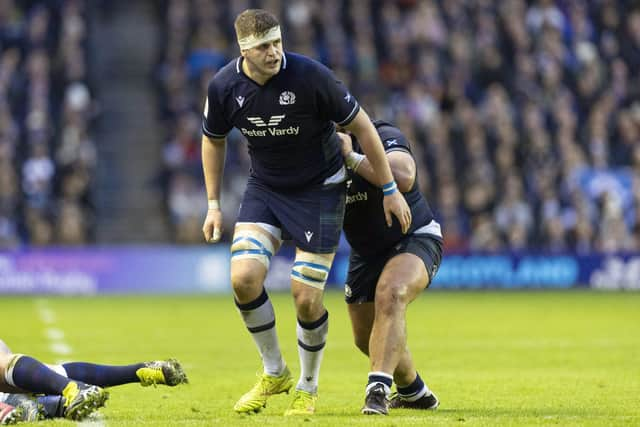Scotland lock Scott Cummings backs smart mouthguards - 'at the end of the day they are there to protect us'
Scott Cummings, the Scotland forward, has given his backing to the so-called ‘smart mouthguards’ which are designed to help with identifying the need for head injury assessments (HIAs).
They have been introduced into this season’s Six Nations which is the first elite men’s competition to use the new technology. The mouthguards measure a player’s exposure to ‘head acceleration events’ and provide in-game alerts to pitch-side medical teams.
Advertisement
Hide AdAdvertisement
Hide AdScotland head coach Gregor Townsend expressed concerns about them after Zander Fagerson was forced off for an HIA and a mandatory 10-minute break during Saturday’s win over England when a tackle triggered an alert via his mouthguard. It’s the second game in a row it has happened to a Scotland player after George Turner went off against France. Both players were deemed fit to return to the pitch.


While Townsend is fully behind player welfare he has been surprised that the mouthguards have been introduced in the Six Nations in the first instance rather than being trialled in the club game. “I think we have to really watch what we’re doing here by trusting technology that’s not been proven,” he said.
Cummings backed their introduction but admitted there was a sense of frustration among players. “It’s brought in to try and protect us,” said the Scotland second row. “Obviously it’s frustrating on the pitch when you’re called off, but I back the whole set-up. At the time you are going to be annoyed but when you take a step back you understand what it’s trying to do. It’s a good initiative, I wear it. Obviously, if you’re pulled off you’re going to be annoyed, but at the end of the day they are there to protect us.”
The ‘instrumented’ mouthguards send alerts whenever a ‘head acceleration event’ with G-force that exceeds 70g and 4,000 radians per second squared is detected.
